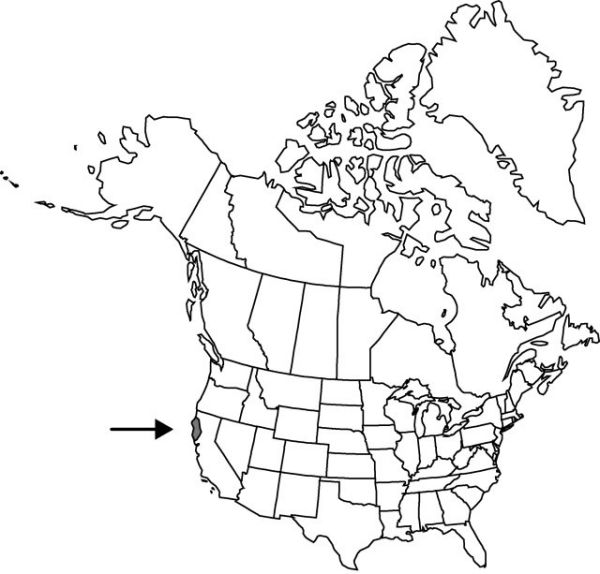Iris purdyi
Proc. Calif. Acad. Sci., ser. 3, 1: 78, plate 7, fig. 2. 1897.
Rhizomes much branched, forming dense clumps, dark redbrown, very slender, 0.3–0.6 cm diam., covered with remains of old leaves; roots fibrous. Stems simple, solid, 1.5–2.5 dm. Leaves: basal few, laxly spreading, longer than stem, blade bright dark green adaxially, flushed pink basally, veins subprominent, linear, 2.8–4.8 dm × 0.5–0.8 cm, rather glaucous abaxially, margins thickened, apex acute; cauline imbricated, sheathing, free only at tips, bracteiform, blade green edged with pink, strongly striate, inflated, apex acuminate. Inflorescence units 1–2-flowered; spathes green with prominent red margins, inflated, broadly lanceolate-ovate, 5.6–7 cm × 8–13 mm, unequal, outer shorter than inner, herbaceous, apex acuminate. Flowers: perianth pale creamy yellow flushed with pale lavender, with conspicuous brownish purple lines; floral-tube linear, 3–5 cm, somewhat dilated apically; sepals widely spreading, veined and dotted with deeper purple on claw and limb, oblanceolate, 5.5–8.4 × 1.6–2.7 cm; petals spreading, lanceolate, 5–7 × 1–2 cm, margins sinuate; ovary trigonal in cross-section with groove along each angle, narrow, 1–1.5 cm; style 2–3 cm, crests narrowly semiovate or nearly linear, laciniate, 1–2 cm; stigmas rounded-truncate to 2-lobed, never triangular, margins minutely denticulate; pedicel 1–2 cm. Capsules oblong-ovoid, trigonal, somewhat beaked, 2–3 cm. Seeds light-brown, D-shaped, oblong-ovoid, thick, finely wrinkled. 2n = 40.
Phenology: Flowering Apr–Jul.
Habitat: Open woods of redwood region
Discussion
Iris purdyi hybridizes with I. bracteata, I. chrysophylla, I. douglasiana, I. innominata, I. macrosiphon, I. tenax, and I. tenuissima.
Selected References
None.
Lower Taxa
"decreasing" is not a number."thick" is not a number."dm" is not declared as a valid unit of measurement for this property."dm" is not declared as a valid unit of measurement for this property.
